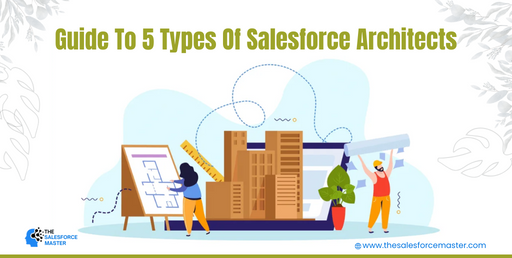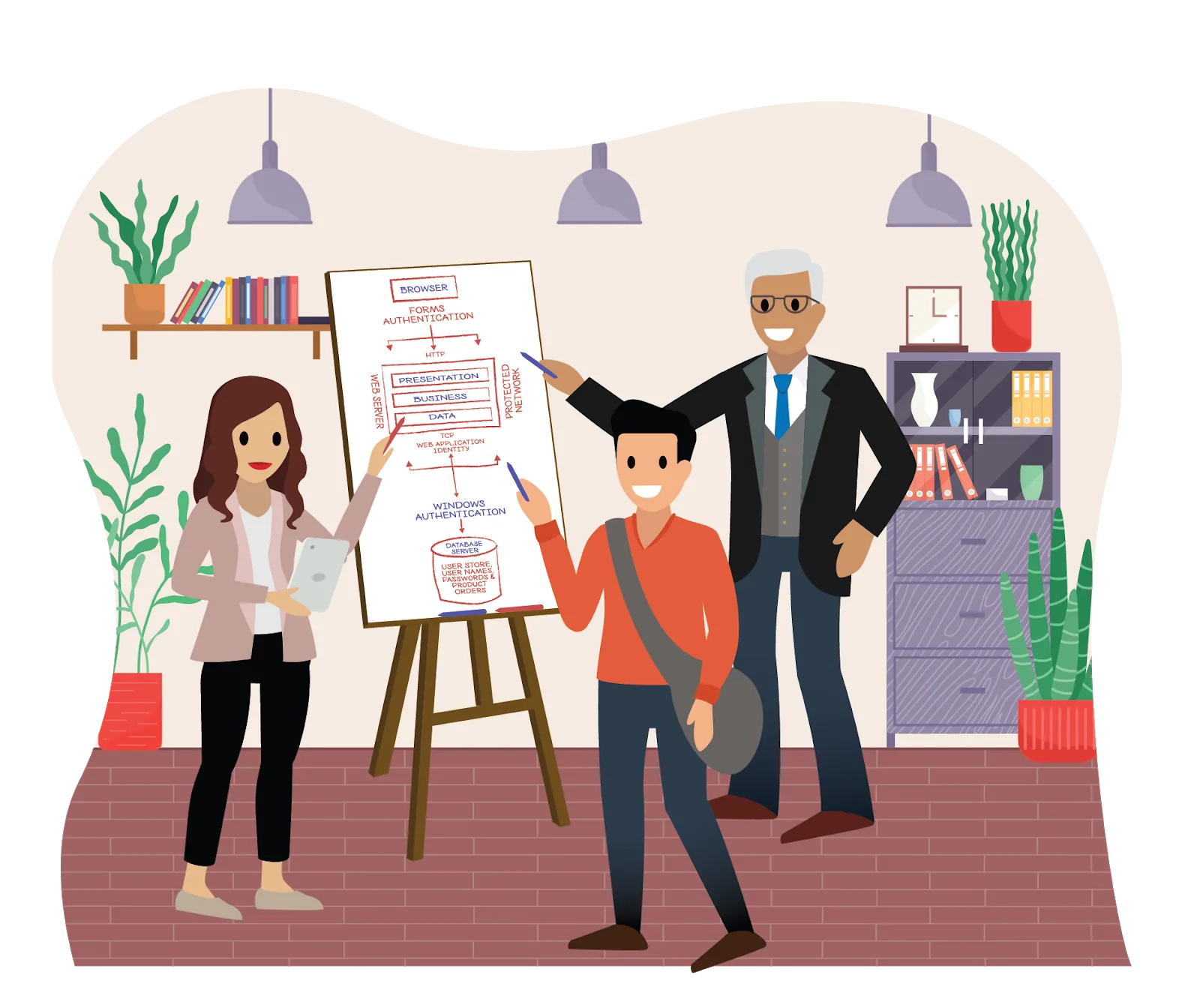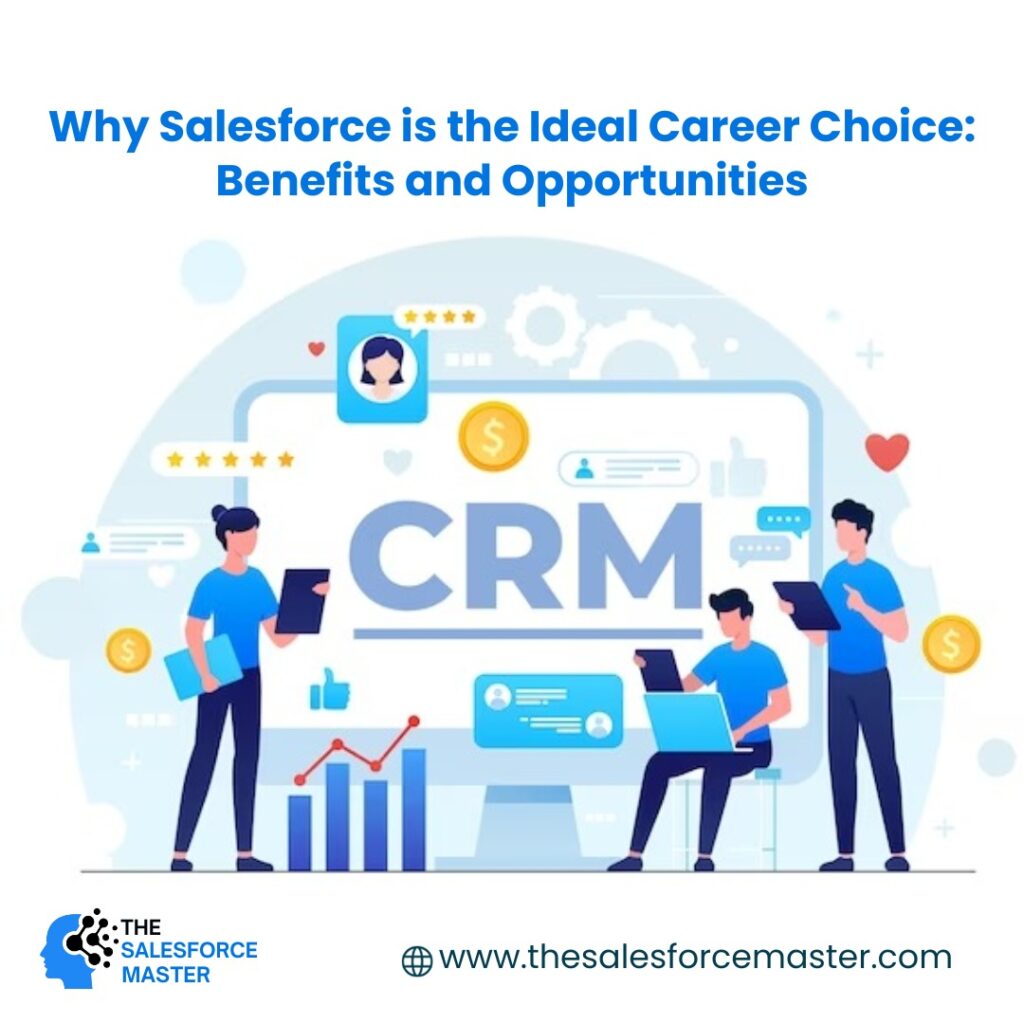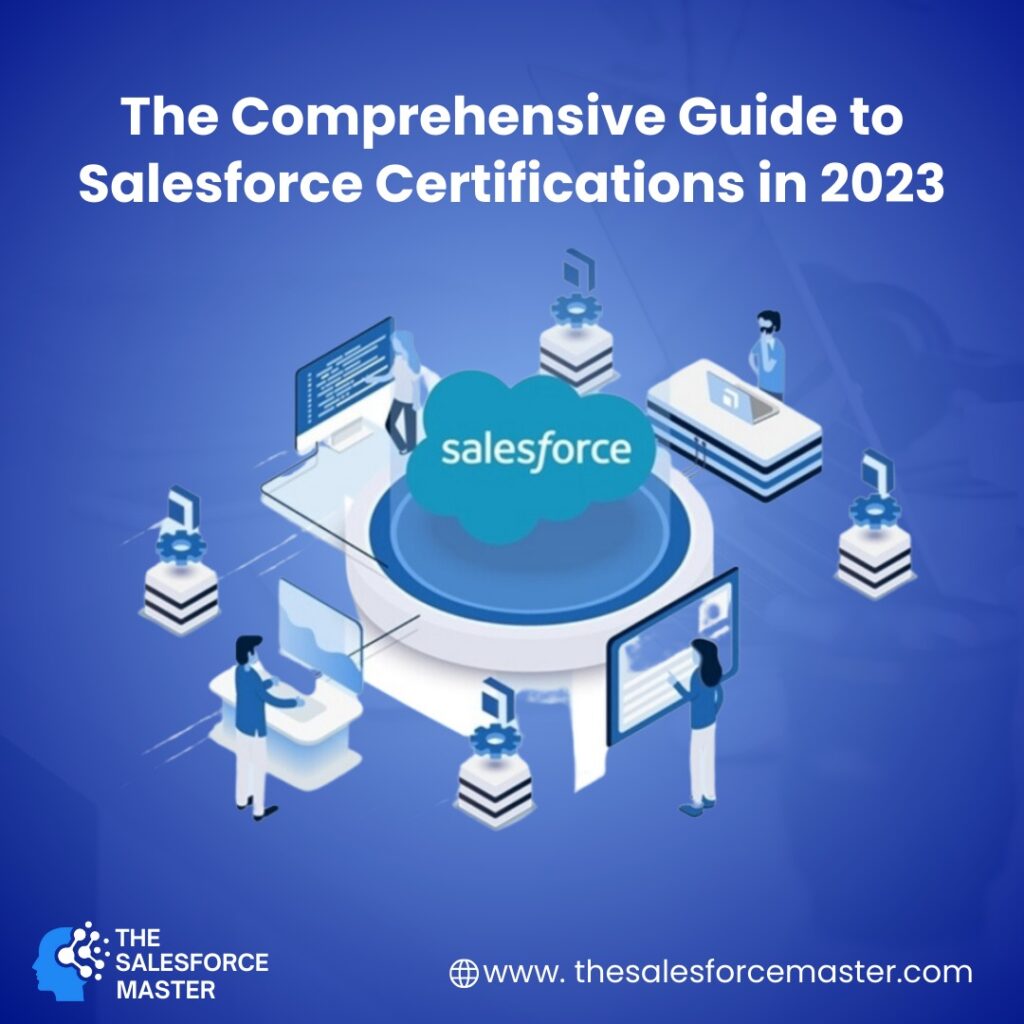
Salesforce Architects are highly sought-after professionals within the Salesforce ecosystem. Leveraging their expertise, they meticulously blueprint the structure and functionality of your Salesforce solution. Their primary goal is to ensure the system remains operational, secure, cost-effective, and tailored to the specific requirements of your business.
While an Architect lays down the overarching framework, effective system design transcends mere structure. It must be finely tuned to accommodate the unique needs of the end-users.
Within projects, Architects don’t fit into rigid job titles but rather assume different roles or “flavors” based on their specific responsibilities. Each certified architect can adeptly handle any of these roles as needed. To gain insights into this dynamic field, we turned to Gemma Blezard, a Solution Architect and the Founder of The Architech Club and Ladies Be Architects, for her expertise. Let’s delve into her insights.
The point of this guide was to inspire conversation – a level of debate about where we, as architects, fit into projects, how we add value, and what the career path looks like.
– Gemma Blezard
Types of Salesforce Architects
If you’re unfamiliar with the responsibilities of Salesforce Architects, it’s essential to understand the distinctions between each type:
Solution Architect: Manages everything within Salesforce.
Technical Architect: Handles the flow of data into and out of Salesforce, along with integrated systems.
Data Architect: Designs and defines scalable data architecture.
Enterprise Architect: Oversees all other architects, with a comprehensive focus that includes the business.
Transformation Architect: Defines the target operating model, manages resources and stakeholders, and oversees governance.
These roles may spark questions about their differences and how they collaborate. For instance, what sets a Technical Architect apart from a Solution Architect? How do Enterprise Architects coordinate with other roles? Is it necessary to involve all types of Architects in a single project? Exploring these questions can clarify the distinct contributions of each role and how they complement one another in complex projects.
Solution Architect – The Party Planner
This individual is accountable for the entirety of operations within Salesforce. This encompasses crafting robust, scalable, and efficient solutions within Salesforce, ensuring seamless integration into a unified and appealing framework. They also handle data preparation for transmission to external systems and manage data processing upon its receipt from external sources.
Their responsibilities include:
– Designing data models
– Overseeing data migration
– Managing data sharing
– Developing multi-component solutions*
– Configuring Salesforce (and overseeing consultants involved in configuration)
– Implementing connected apps
– Creating declarative automation
– Enhancing user experience (UX)
– Facilitating data handoff to other systems
– Supervising environment management
– Orchestrating deployments
– Leading a team of consultants and/or administrators
*Multi-component solutions refer to addressing business challenges using various methods that necessitate coordination between them. Examples include integrating Sales Cloud with Certinia PSA (formerly FinancialForce) or integrating Salesforce with MuleSoft, which then communicates with other integrated systems acknowledged by MuleSoft.
Technical Architect – The Door Person
This role is accountable for managing the flow of data in and out of Salesforce, ensuring its integrity as the central repository of information. Similar to Solution Architects, they design comprehensive solutions involving multiple components, facilitate data transfer to and from other systems, and orchestrate data processing activities.
However, their primary focus lies in safeguarding data security during storage and transmission. They meticulously control access to data, ensuring only authorized entities can interact with Salesforce, thus fortifying its security posture.
Their responsibilities encompass various domains:
– Crafting data models
– Orchestrating data migrations
– Designing complex solutions involving multiple components
– Developing code within Salesforce (e.g., Apex, Visualforce, LWC)
– Evaluating and integrating third-party applications from the AppExchange
– Architecting APIs for seamless integration
– Implementing secure messaging protocols
– Ensuring reliable delivery of data
– Managing large data volumes efficiently
– Facilitating seamless integration with external systems
– Devising effective DevOps strategies
– Leading teams of developers
– Implementing continuous integration/continuous deployment (CI/CD) pipelines
– Managing development and production environments
– Executing deployment processes efficiently
Salesforce Data Architect – The DJ
The role of a Salesforce Data Architect is pivotal in shaping and designing the data infrastructure to ensure scalability. If we liken data to music, the Data Architect is akin to a DJ, curating the right tracks to set the mood and drive the momentum of the event.
In projects where a Data Architect is involved, they take ownership of crucial aspects such as the data model, migration, quality, governance, and backup strategies. Their focus spans across ensuring data availability, reliability, integrity, security, structure, and storage within complex environments.
Digital transformations often entail aggregating data from diverse external sources, which may require integration with Salesforce directly, management through Apex jobs, or middleware like MuleSoft. While Technical Architects handle the mechanics of data flow in and out of systems, Data Architects optimize data holistically and consider user interaction.
Apart from devising strategies and plans for their responsibilities, Data Architects are hands-on, often leading execution and overseeing teams. Their duties encompass:
– Data modeling
– Planning and executing data migration with consideration for risks and dependencies
– Enhancing data quality through ETL activities and risk identification
– API design
– Defining transformation rules
– Addressing risks associated with large data volumes (LDVs)
– Coordinating data management between external systems and middleware
– Formulating backup strategies
– Leading teams of data analysts
Collaboration with Technical Architects is common, with the latter often providing direction on data architecture strategies and optimizing back-end systems for handling large data volumes. This partnership, akin to a party planner and DJ, ensures a cohesive design approach.
Ultimately, the Salesforce Data Architect operates closely with the Technical Architect and may also collaborate with Solution Architects as part of a unified design team.
Salesforce Enterprise Architect – The Club Manager
The Enterprise Architect holds a pivotal role in overseeing all architects involved, encompassing responsibilities across both the business and client-side IT teams. Their role involves ensuring the entirety of the design project is functional, secure, cost-effective, and aligns with the specific requirements of its users.
This entails taking a holistic approach throughout the analysis, design, planning, and implementation phases to ensure stakeholder consensus and alignment.
Key areas overseen by the Enterprise Architect include:
1. Managing the target operating model (TOM).
2. Leading change management efforts.
3. Developing and refining the project roadmap.
4. Strategizing Salesforce program initiatives.
5. Prioritizing and managing the project backlog.
6. Supporting business planning activities.
7. Assisting with resource allocation.
8. Ensuring governance adherence.
9. Engaging with C-level executives.
Notably, the change management aspect often faces budget constraints during project scoping.
Gemma highlighted that her previous boss and mentor, a CTA, emphasized the significance of transformation, particularly appreciating the focus on this aspect within the article. Gemma clarified that at The Architech Club, they view transformation as essential, seeking to give it prominence rather than relegating it to mere ‘learning and people stuff’.
Transformation Architect – The Nightclub Owner
The Transformation Architect is tasked with implementing the envisioned strategy. They oversee the target operating model, roadmap, workstream planning, resource allocation, required skill sets, project governance, and engagement with stakeholders.
While the Enterprise Architect concentrates on the project’s daily operations, the Transformation Architect takes a broader perspective, aiding in the development of metrics to gauge its impact. Their role includes ensuring a customer-centric approach throughout the Salesforce project and ensuring its alignment with the organization’s overarching objectives.
Which Architects Do You Need?
In an ideal scenario, having a diverse team of architects can significantly enhance project outcomes by covering various aspects of solution design. However, in reality, budget constraints may limit the number of architects a project can afford. The specific types of architects required for a project depend on factors like its complexity, whether it involves multi-cloud or multi-platform environments, innovation requirements, or if it entails developing an application on platforms like Salesforce.
For instance, if you need to communicate changes to salespeople effectively, a Technical Architect might not be the best fit as their focus and skill set differ. Collaboration among architects is crucial, as they challenge each other’s ideas and ensure comprehensive solution design. This collaborative approach results in well-rounded solutions crafted by experts in their respective domains.
While the five types of architects mentioned provide a framework, individuals can take on multiple roles depending on the project’s needs. This framework offers career paths within the ecosystem, allowing individuals to specialize based on their interests and strengths.
Organizations often categorize responsibilities into these types to facilitate resource allocation and budgeting. While some may feel confined by these categorizations, they are essential for businesses to effectively navigate the Salesforce ecosystem and allocate resources accordingly.
Evolution of the Salesforce Architect Role – A Turning Point?
The evolution of architect roles, particularly within Salesforce, has seen significant milestones that have shaped their definition and prominence. Initially, these roles were less clearly delineated, with architects typically being IT-focused specialists called upon for complex projects. This trend was more pronounced in sectors like Oracle or IBM, where architect roles were established earlier.
However, with Salesforce’s investment in their architect program, there has been a notable shift. This investment has not only defined the unique value architects bring but has also distinguished them from other roles within the Salesforce ecosystem, such as administrators or consultants. The proliferation of certifications has become a key indicator of the growing popularity and recognition of the architect role.
Over time, the notion of what constitutes a Salesforce Architect has solidified. Certification programs have provided a clear path for individuals to ascend to the top levels of expertise, leading to increased opportunities and the delivery of tangible value.
Furthermore, this evolution has opened up new career pathways for professionals who prefer to remain within technical disciplines rather than transitioning into management roles. Aspiring architects can now advance based on their technical prowess and project delivery experience, rather than managerial capabilities.
This shift reflects a broader desire among experienced professionals to be recognized and valued for their specialized knowledge and skills. It emphasizes that specialization is not only acceptable but also valuable within the architectural domain. The concept of the ‘5 Types of Architects’ serves to illustrate the diversity of specialization available within this field, providing a roadmap for career progression and expertise development.
Summary
The guide has delineated variances among the architect roles commonly found within Salesforce projects. In a given process, five distinct teams may be involved, each needing to independently make decisions that collectively contribute to a major strategic determination.
We’ve emphasized other facets that are occasionally overlooked, such as business transformation, change management, and personnel considerations. While these are architectural considerations, they are sometimes delegated to other project roles, such as Business Analysts.
Salesforce is actively establishing how these roles align with credentials through their certification and enablement initiatives.
For more updates about salesforce, visit us on www.thesalesforcemaster.com

